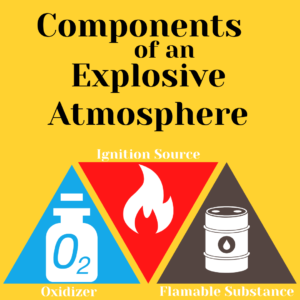Ventilation Systems for Hazardous Areas Part 2: System Design Factors
In Part 1 of this series, we talked about the codes that apply to the design of an explosion proof or hazardous ventilation system. In Part 2, we will discuss two key factors that go into the design of the system, which are the amount of air flow required and the location of the equipment.
Required Airflow
The first step in the design of a ventilation system for a hazardous area is to determine the volume of air needed to dilute, evacuate or collect the hazardous material. For example, we had a customer that manufactured mobile turbine generator packages that were installed inside enclosures. The customer needed a ventilation system to dilute fugitive gases that might build-up inside the enclosure due to leaks. In this case, the challenge was to determine the appropriate amount of continuous air flow to dilute the possible fugitive gases which could impact the safety of the turbine generator package.
A ventilation system may also be used to evacuate the air in a space if a hazardous gas is detected. A customer  came to us needing a ventilation system that could rapidly evacuate a space if an ammonia leak was detected. In this case, the ventilation system needed to provide 60 air changes per hour to minimize exposure to the hazardous gas.
came to us needing a ventilation system that could rapidly evacuate a space if an ammonia leak was detected. In this case, the ventilation system needed to provide 60 air changes per hour to minimize exposure to the hazardous gas.
Equipment Location
If we were designing a ventilation system for comfort cooling, we can assume that based on standard properties of air, it will act a certain way and the ventilation equipment can be located accordingly. But in the case of a ventilation system for a hazardous area, we need to understand how the hazardous material will mix with air. In the case of combustible gases, the density of the gas relative to air will determine if the gas will rise or sink. Take propane for example, it is denser than air and will sink to the floor of a building or enclosure. If we were designing a system where there is the potential for propane to be present, we would want to locate any supply and exhaust equipment at ground level to prevent the build-up of gases that could lead to an explosion.
Many types of dust can be combustible. Flour, sugar, wood and plastic dust can cause an explosion if they are in a high concentration. To prevent combustible dust from becoming air borne, it is best to collect it at the source. Therefore, a ventilation system for combustible dust will have pick-up points located at each potential source of dust.
Part 3
So far, we have learned what codes need to be applied to ventilation systems in hazardous areas. We also briefly discussed why required airflow and equipment location are important factors in designing a ventilation system. In Part 3, we will discuss how ventilation equipment should be manufactured to reduce the risk of sparks that may cause an explosion.

